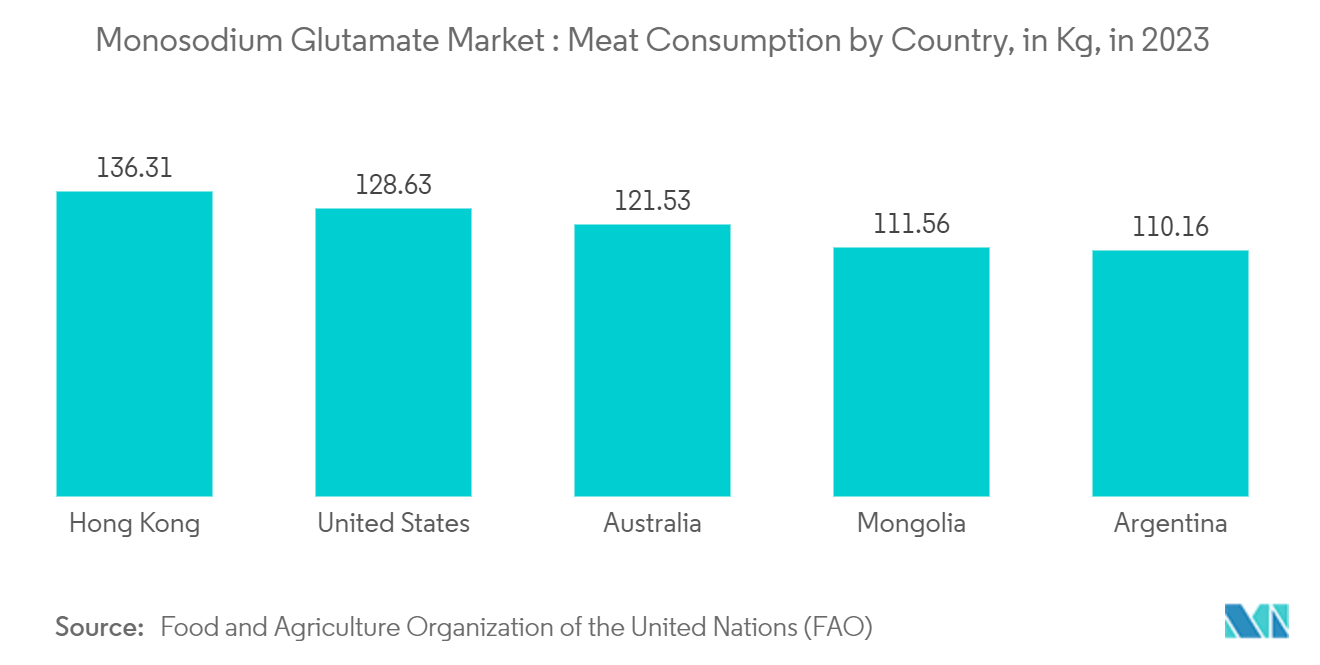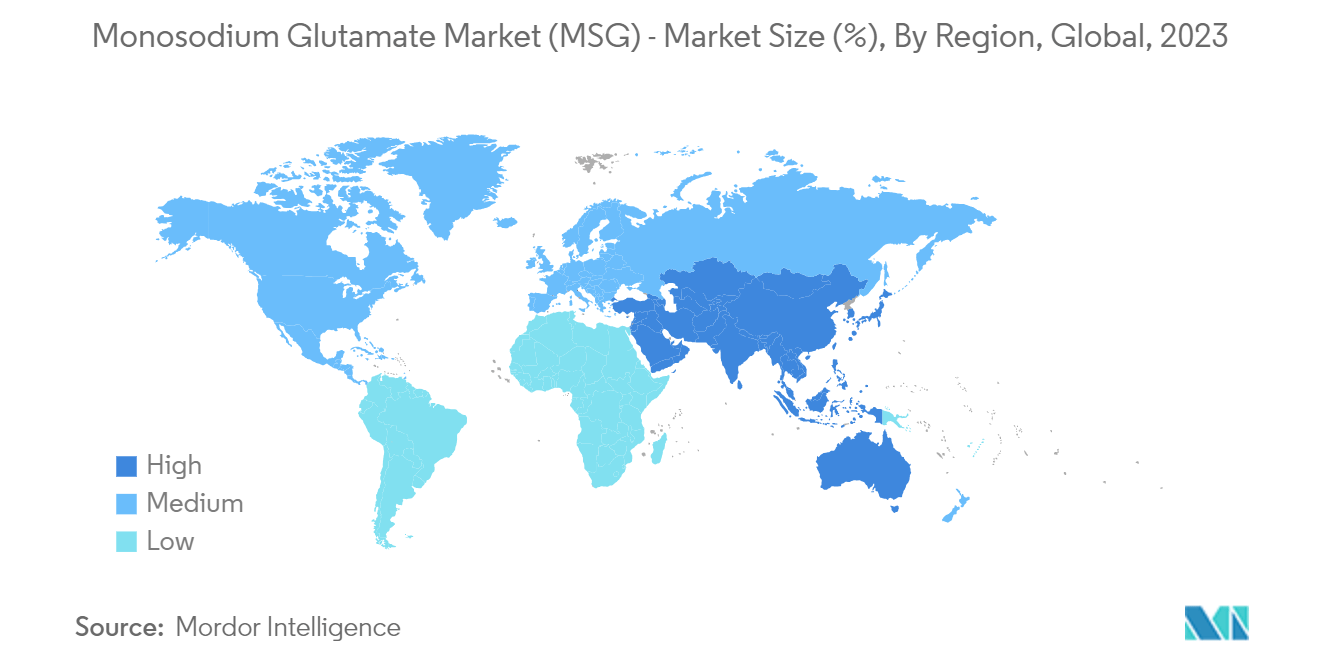Market Trends of Monosodium Glutamate (MSG) Industry
Increase in Meat Consumption Drives the Monosodium Glutamate Market
MSG consumption has increased due to the widespread usage of MSG in meat products. The increase in meat consumption drives the monosodium glutamate market. There has been a change in consumer preference regarding meat consumption in developed and developing countries. For instance, according to the Food and Agriculture Organization of the United Nations (FAO), global meat consumption increased by 1.7% in 2022 compared to 2021.
Monosodium glutamate is primarily used as a flavor enhancer. It provides umami, one of the five basic tastes, which enhances the savory flavor of meat products. Processed meats such as hot dogs, lunch meats, beef jerky, sausages, smoked meats, pepperoni, and meat snack sticks often contain monosodium glutamate. In addition to processed meats, MSG is often found in prepared foods that contain meat, such as soups, stews, frozen meals, and snack foods. It helps to intensify the meat flavors in these dishes. Key players are striving to enter into the potential prospects of the food sector to foster innovation, adapt to quality measures, and boost usability to create such processed meats and related opportunities.

Asia-Pacific Holds a Prominent Market Share
Asia-Pacific is the most profitable region for the MSG market due to extensive urbanization, a rise in foreign investments, and a growing desire for processed food and beverages among the millennial population. The expansion of the processed food industry in Asia-Pacific resulted in a significant boost in revenue for monosodium glutamate. This could be primarily attributed to shifts in lifestyle and dietary preferences, along with an increase in disposable income. Additionally, busy lifestyles and an increase in the number of working women are contributing to the rise in the consumption of processed food, which supports the market expansion.
China is a major producer of MSG, which is supplied to countries such as India, Thailand, and Indonesia. Its import demand has increased due to the growing demand for processed foods in developing nations such as India. The need for flavor enhancers is growing in developed countries, such as the United States and Russia, which are among the top importers of MSG from China and Indonesia. As the import and export percentages are low, all worldwide manufacturers are committed to growing their businesses and upgrading their businesses to capture more market shares. International corporations, such as Ajinomoto, have established plants in China.


